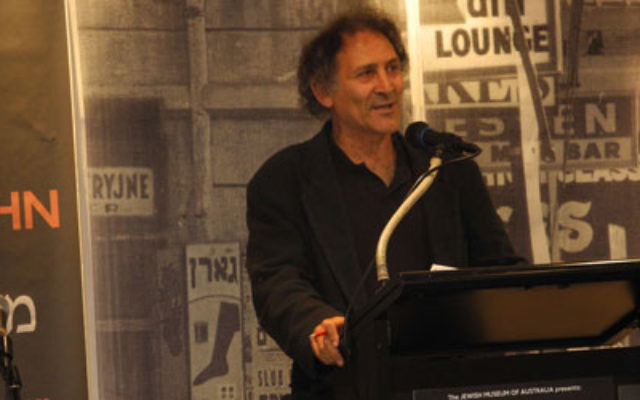Yiddish with an Aussie accent
THE Yiddish language has been around for 1000 years in Europe, but it was in Melbourne – regarded by some newly arrived migrants as “ek velt”, Yiddish for “at the ends of the earth” – that a thriving community developed after World War II.
Much of the impetus stemmed from the influx of postwar Yiddish-speaking migrants, mainly from Poland, who created a vibrant centre of Yiddish life with theatre, literature, restaurants and schools. Known by Ashkenazi Jews as mameloshn or mother tongue, Yiddish has developed wherever its speakers have lived.
Last week, the Jewish Museum of Australia launched Mameloshn – How Yiddish Made a Home in Melbourne as its major exhibition for 2011.
Curator Anna Epstein has spent the past three years working on the exhibition, mainly drawing on the museum’s collection of more than 20,000 items, as well as sourcing items from the Kadimah Jewish Cultural Centre.
“It was an inspiring generation that survived World War II with their ideals intact,” says Epstein.
“They made Melbourne the Yiddish capital of Australia and one of the thriving centres of the Diaspora.”
Epstein says these migrants did their best to recreate much of their old way of life with Yiddish an important part of it.
Leading the way was the Sholem Aleichem School, the David Herman Theatre, Cafe Scheherazade and Acland Street restaurants, shops and businesses. From theatre to community meetings, the sounds of Yiddish were in the air.
The Mameloshn exhibition provides a multimedia journey beginning in Eastern Europe, exploring other Yiddish centres in the Diaspora and then focusing on Melbourne. It is a bilingual exhibition incorporating memories and memorabilia using displays, film and music. Visitors can listen to translations on iPods.
A Yiddish typewriter owned by printer Herszel Bachrach is on display as a tribute to a rich literary tradition – more than 70 Yiddish books were published in Melbourne between 1950 and 1990.
Also on display is a suitcase symbolic of one migrant who arrived in Australia with a case full of Yiddish books.
“Many migrants arrived after the war with only Yiddishkeit,” says Epstein.
A highlight of the exhibition is prominent community figures reading their favourite Yiddish stories that have been loaded onto iPods.
Epstein faced many challenges in putting together the exhibition, acknowledging the antipathy after World War II to Yiddish by many Jews in Israel and the Diaspora who wanted to forget the culture they feel was drenched in humiliation by the Holocaust.
And she had to find a way to depict the heated postwar brawls over the communal use of Yiddish versus Hebrew – a dilemma that was eventually resolved with the triumph of Hebrew in the Jewish schools and English in communal life.
In a departure from most other exhibitions that Epstein has worked on, an advisory committee was formed to provide input into the Mameloshn exhibition. The panel included author Arnold Zable, singer and Yiddish teacher Freydi Mrocki, educator Danielle Charack, Charles Slucki and Professor Andrew Markus of the Australian Centre for Jewish Civilisation at Monash University.
Klezmania vocalist Freydi Mrocki has produced a soundscape for the exhibition that includes klezmer music, sound bites from Yiddish radio and the story of veteran piano accompanist Miriam Rochlin.
“I’ve tried to broaden people’s understanding of the exceptional wealth of Yiddish music,” Mrocki says.
“My Yiddishe Mama is well-known, but there are many other songs that people may not have heard.”
Mrocki explains that the wave of postwar migrants brought many Yiddish speakers here who recreated the cultural life that they had left behind in Europe. “The history and institutions and culture that was created in Melbourne was envied around the world. Melbourne was the jewel in the Yiddish world’s crown.”
And what of the future for Yiddish, which is symbolised in the exhibition by a boy wearing a T-shirt?
Epstein hopes the exhibition will help foster wide interest in Yiddish and notes that Yiddish is at the heart of studies at Sholem Aleichem College in Elsternwick.
“There is a lot of feeling for the Yiddish language,” she says. “There is a remarkable present and a future for Yiddish.”
The Mameloshn – How Yiddish Made a Home in Melbourne exhibition is at the Jewish Museum of Australia, 26 Alma Road, St Kilda until March 2012. Enquiries: www.jewishmuseum.com.au.
REPORT: DANNY GOCS
PHOTO: Author Arnold Zable officially opens the Mameloshn exhibition on March 31. Photo: Joe Epstein


comments